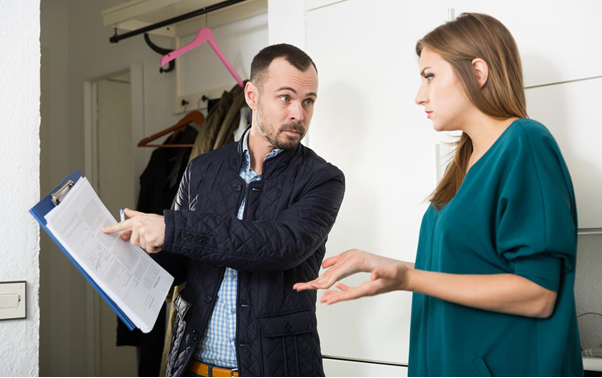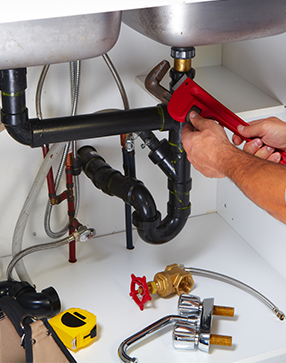Strategic Approaches for Dealing with Plumbing Issues in Rentals
Strategic Approaches for Dealing with Plumbing Issues in Rentals
Blog Article
This post listed below involving Who is responsible for plumbing maintenance is extremely fascinating. Don't miss out on it.

Handling pipes issues in rental buildings effectively is critical for preserving lessee complete satisfaction and maintaining the home's worth. Whether you're a property owner or a home supervisor, knowing exactly how to resolve these common issues can conserve you money and time while ensuring compliance with lawful duties. Here's a step-by-step overview on just how to handle plumbing problems in rental buildings.
Document Everything
Keep thorough records of all reported plumbing problems and the actions required to solve them. Documents should include dates, descriptions of the issue, interaction with lessees, and invoices from contractors or plumbings. This info can be important for insurance policy cases, tax obligation reductions, and legal protection.
Use Qualified Professionals
Always use licensed and insured professionals for significant plumbing repairs and installations. This ensures that the work is up to code and can help avoid liability concerns in case of crashes or more damages. It additionally guarantees occupants that fixings are being taken care of properly.
Develop Clear Interaction
Motivate renters to report any plumbing concerns as soon as they occur. Give numerous communication channels such as phone, e-mail, or a renter portal to make it easy for them to connect. Trigger actions to these reports can prevent small issues from escalating right into significant problems.
Educate Lessees
Inform your renters about what comprises a pipes emergency and what does not. Provide standards on exactly how to handle small problems themselves, such as using a bettor to unclog a toilet. Additionally, notify them about what they should stay clear of putting down drains pipes to avoid clogs, such as oil, coffee grounds, and non-biodegradable things.
Routine Maintenance
Apply a routine upkeep routine for all plumbing systems in your leasing residential or commercial properties. Regular checks can assist identify and settle problems like leakages, slow-moving drains, or rusty pipes prior to they become significant. Think about working with an expert plumber to check the properties every year or semi-annually.
Quick Response to Emergency Situations
Have a plan in place for replying to plumbing emergency situations. This need to include having the call information of trustworthy plumbing solutions that offer 24/7 emergency repair services. Quick activity is necessary to decrease damages in situations like burst pipes or serious leaks.
Preventive Upgrades
Think about updating older pipes systems and components to a lot more modern-day, reliable designs. This can lower the frequency and severity of plumbing issues and lower long-term maintenance prices. It's likewise a marketing point for potential lessees who value upgrades and contemporary attributes.
Renter Move-Out Inspections
Conduct complete plumbing checks throughout move-out examinations to ensure that any type of problems are determined and addressed before a new renter relocate. This protects against disagreements with brand-new renters over pre-existing conditions and makes certain the building remains in leading problem.
Understand Lawful Duties
Be aware of your legal responsibilities pertaining to pipes and basic property maintenance. Most jurisdictions require landlords to guarantee their homes are habitable and that all plumbing systems remain in good working order. Failure to attend to severe concerns without delay can lead to legal actions from tenants.
Renter Reimbursements
If a pipes problem requires prompt focus and the occupant fixes the problem on their own, have a clear plan in position for repaying costs. Ensure lessees recognize they must obtain previous authorization for higher-cost repair work unless it's an absolute emergency situation.
Verdict
Managing plumbing concerns in rental buildings needs a proactive approach and excellent interaction with renters. By remaining on top of upkeep, responding without delay to emergencies, and using professional experts, landlords can maintain their homes in excellent problem and maintain excellent connections with lessees.
How to Handle Water Damage in a Rental Property
What is Water Damage?
Water damage is harm or destruction caused by water entering areas where it is not supposed to be. It can be caused by a variety of sources and can manifest in different ways. The most common examples of water damage include:
Leaking roof Plumbing leaks Appliance malfunctions Poor drainage Flooding Sewage backup Condensation Tenant negligence HVAC system issues Frozen pipes Is water damage dangerous?
Water damage itself is not inherently dangerous, but it can lead to various hazards and health risks if not promptly and properly addressed. The severity of these risks depends on the extent of the water damage, the source of the water, and how quickly it is mitigated.
Some potential dangers associated with water damage include structural damage, mold and bacterial growth, electrical hazards, water contamination, and pest infestations. In situations where mold and mildew have gone unaddressed, mold can start to develop within 24-48 hours of water exposure, and this can impose a serious health risk to tenants. In particular, mold spores and damp conditions can lead to respiratory issues and even make existing health problems worse, such as allergies, asthma, or immune disorders.
Water Damage in an Apartment - Who is Responsible?
If the water damage is caused by the tenant’s negligence, the tenant is responsible for the cost of repairs. If the water damage is caused by a defect in the property, the landlord is responsible for the cost of repairs. If the water damage is a result of natural causes, such as excessive rain, then the landlord is responsible, since the water intrusion likely occurred due to a defect in the property. Landlord Responsibility water damage in rental property
Since maintaining habitability is the landlord’s legal responsibility, landlords are responsible for any resulting structural damage caused by water damage. These structural damages may include damage to walls, roofs, ceilings, and flooring. If water damage has affected the rental property’s original structure, the landlord is responsible for repairing or replacing those materials. Therefore, landlords should have property insurance that covers the structural components of their rental property so that they can receive help with the costs of covered events.
Preventative measures can also help landlords avoid massive renovations. Preventative maintenance may include conducting regular inspections to identify and address potential water damage before it becomes a major and urgent problem.
If a landlord fails to meet their responsibilities regarding water damage, it can lead to legal disputes and potential liability. Tenants who believe their landlord is not addressing water damage issues in accordance with California law can seek legal advice or contact local housing authorities for assistance.
https://www.goodlifemgmt.com/blog/water-damage-in-a-rental-property/

Do you appreciate reading up on Plumbing Maintenance and Repair in your Rental Property? Give feedback directly below. We would be glad to listen to your views about this page. Hoping that you come back again soon. Enjoyed our article? Please share it. Help another person check it out. Thanks so much for your time spent reading it.
Report this page